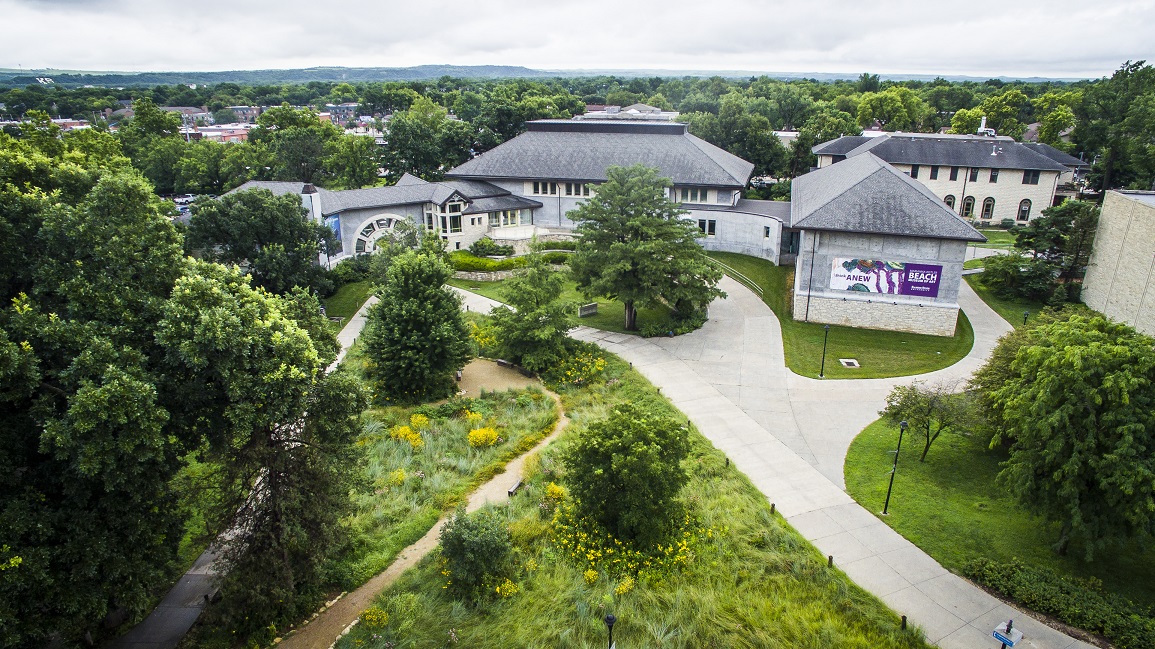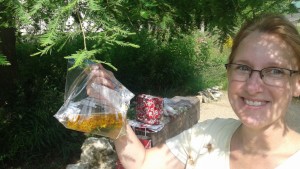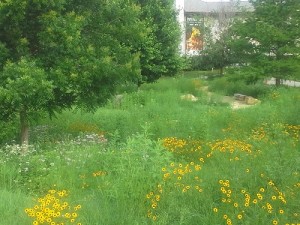Beach Museum of Art Director, Linda Duke inspires us to think about the connections between Art and Agriculture in a letter to the local community.
I want to open by encouraging you to take time this year to visit your campus art museum, the Marianna Kistler Beach Museum of Art. The museum is free, open to the public every day except Mondays, and has evening hours until 8 p.m. Thursdays.
The Beach Museum of Art stewards and grows a collection of regional art, meaning that most artists represented in the collection have ties to Kansas and nearby states. A great many of the subjects evoked in their work pertain to the prairie lands, cultures and livelihoods of the region, and their best works address large themes of concern to all people, not just Kansans. The museum’s temporary exhibitions often explore these broader themes, connecting the collective hopes and concerns of our communities with those of the wide world and vice versa.
In addition to traveling exhibitions, the museum presents an array of public programs and workshops, and develops collaborative, long-term initiatives. One new endeavor is the Prairie Studies Initiative, or PSI. The initiative organizes programs and projects that bring together artists, scientists, historians and others who study our region. It’s an umbrella that allows participants to share knowledge and questions, using the remarkable qualities of art to explore these in new ways. Film screenings, panel discussions or symposia, installations and art-science residencies are among the programs the initiative employs.
The Meadow, a mini-park of native plants just north of the museum, is a PSI project available for classes and student research, and Touch the Prairie is an interactive technology program currently under development. I hope the Prairie Studies Initiative will prove a useful tool for infusing untapped potential of the arts into the life of a top public research university
The arts-based regional focus of both the museum collection and Prairie Studies Initiative can be used to examine many facets of the prairie. One is agriculture, and that’s where I want to focus this letter. The link between art and agriculture is apparent from excavated objects that date to the Neolithic period in Asia and the Mediterranean. In the more recent past of our own region, some indigenous people were skilled farmers and creators of aesthetic objects and performances. From the early years of statehood, many rural school districts in Kansas collected art. Re-examination of the connection of art and agriculture is timely now, in the early years of the 21st century. At Kansas State University, a land-grant university with deep agricultural roots, reaffirming the link between art and agriculture is an important part of educating a new generation of food producers and stewards of the prairie.
The beauty of the earth — its cycles, skies, land vistas and the interconnectivity of its life forms — has always been important to those who produce food. The animals raised to provide meat have taught humans many truths about themselves. The plants that have been carefully nurtured by human intention are so entwined with our culture and history that it is not possible to study those subjects without understanding these crops.
Art can articulate connections between the physical world and the human spirit, helping people ponder the unknown, the partially understood and the disputed. It is able to do this because although artists — poets for example — sometimes use language as their medium, art itself is a human expression beyond language. Art can juxtapose ideas, images and knowledge that grammar cannot accommodate and which defy straightforward definitions of words. Art helps humans cultivate the capacity to stand at the boundary between the known and the unknown. Our land and water, our science and engineering, all bring us to this same boundary. The need of all people for wholesome, abundant food makes our choices urgent and important. More than ever before, the world needs food producers who can think deeply and critically, use language skillfully and who have the ability to sense the world beyond language. I believe art experiences help us develop these capacities.
This is the work of art. Please stop by the museum to visit the permanent collection, temporary exhibitions and to enjoy the many public programs we offer. We are proud to be K-State’s art museum, and all of us on the staff look forward to meeting you!
Regards,
Linda Duke
Director, Marianna Kistler Beach Museum of Art


